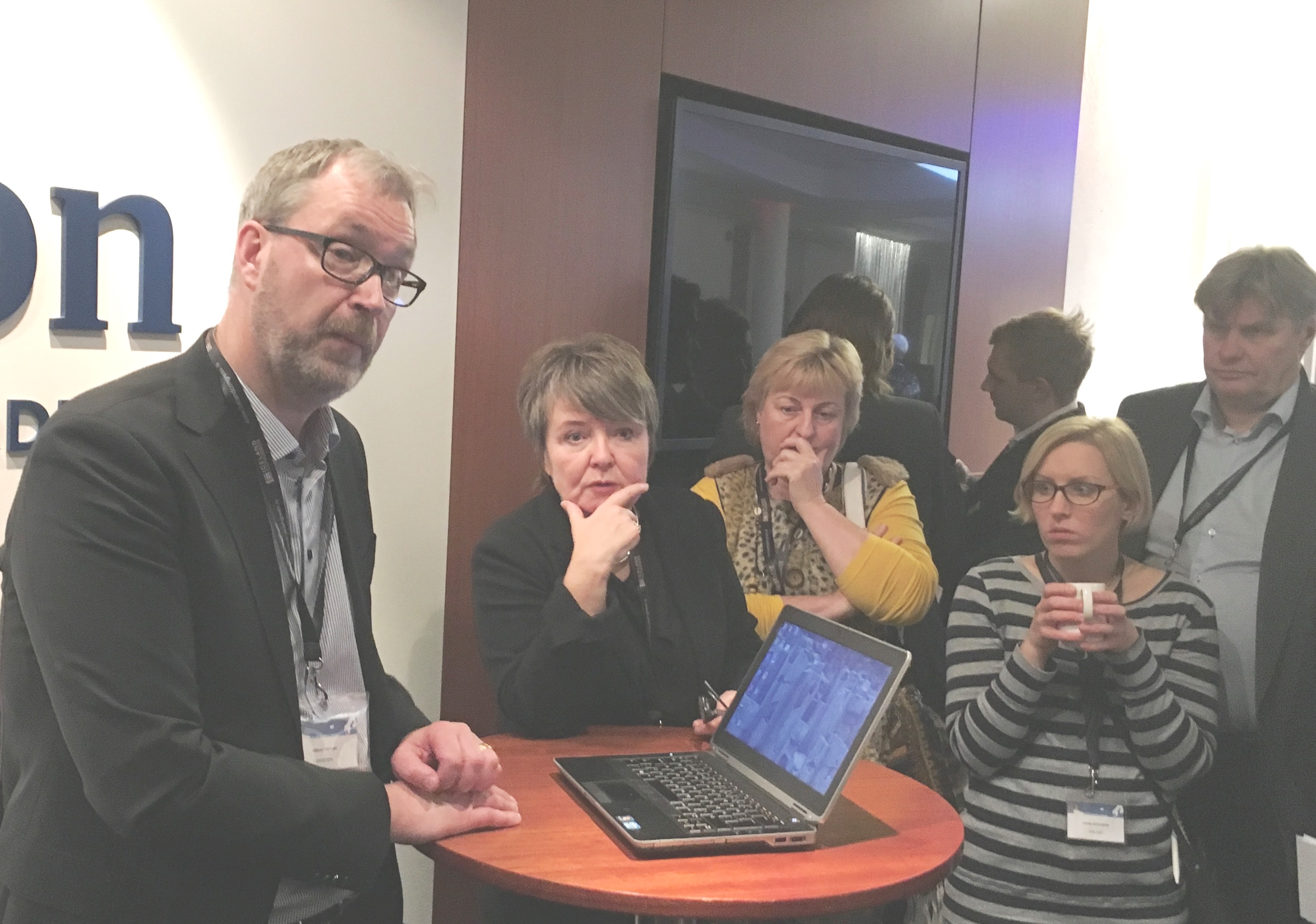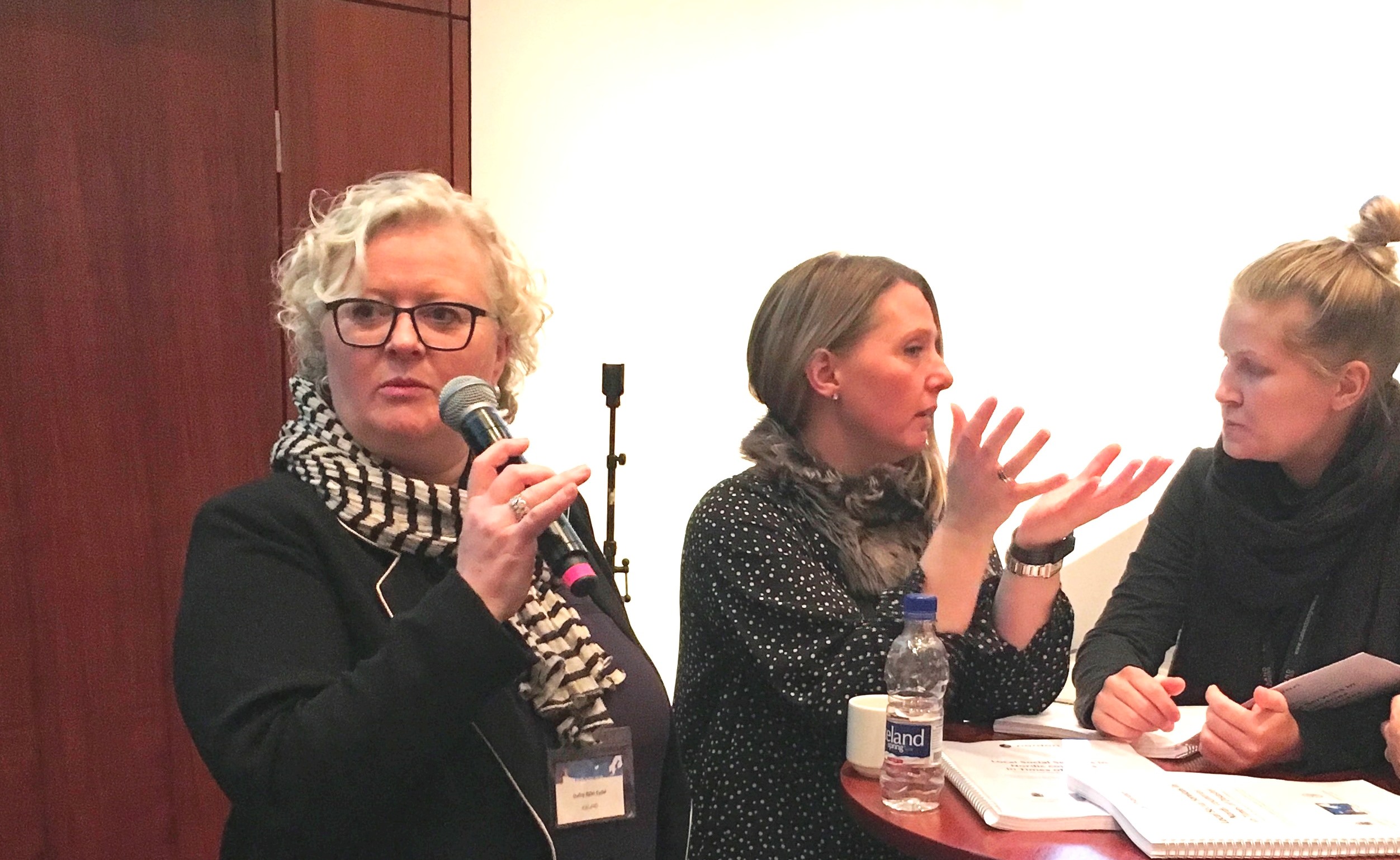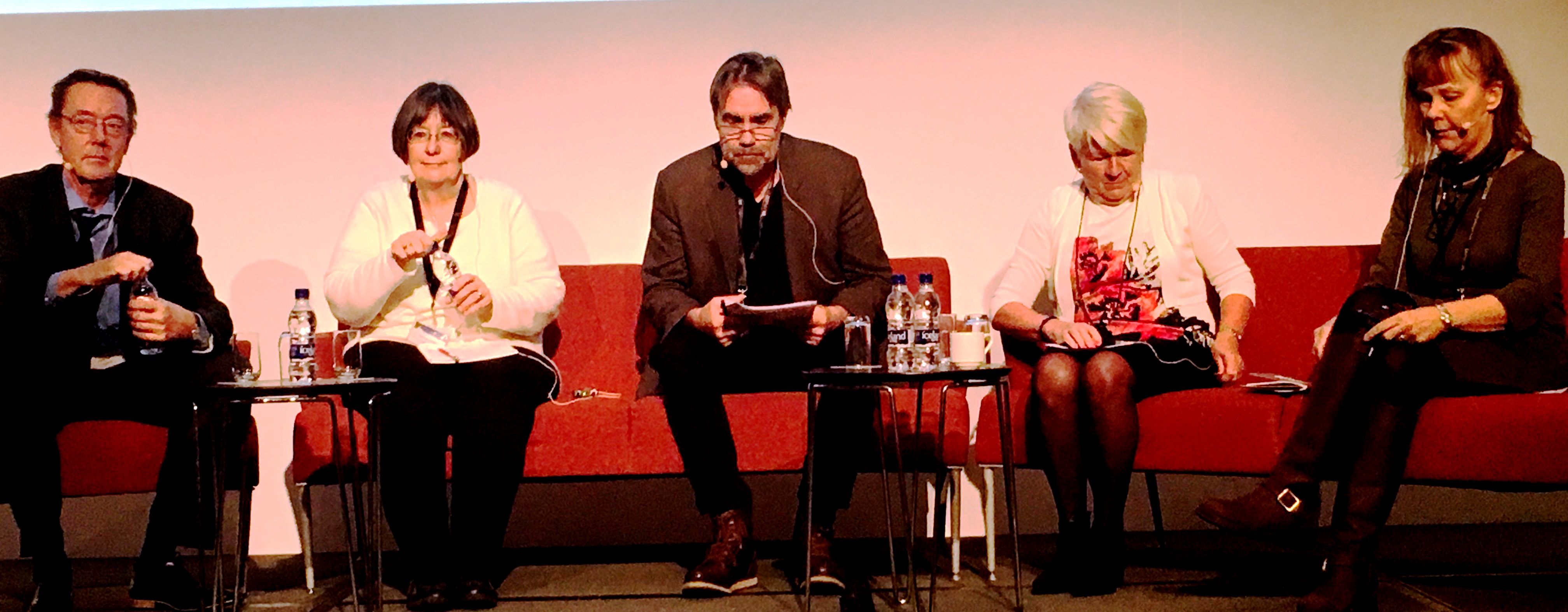Are the Nordic welfare states prepared for crises?
Do the Nordics spend too little money on Nordic welfare? Yes, believes Iceland’s Minister for Nordic Cooperation Eygló Harðardóttir. She sees great opportunities for more welfare cooperation, and supports a proposed Nordic welfare forum and a system for common welfare indicators, to be better prepared for future crises.
The Nordic Welfare Watch is a three year long project which began during Iceland’s 2014 Presidency of the Nordic Council of Ministers. Iceland’s government wanted to use the experiences from the Icelandic Welfare Watch, and also use what Iceland learned from the crisis. This created a basis for looking into how the Nordic countries can become better prepared for future crises.
The Nordic Welfare Watch’s purpose was to further and strengthen sustainability in the Nordic welfare systems through cooperation, research and the exchange of knowledge and experience. The project came to its formal end at a conference in Reykjavik on 10 November.
“Are the Nordic welfare states prepared for future crises? asked Siv Friðleifsdóttir, director of the Welfare Watch at the conference opening session.
More questions rapidly followed.
“Are local social services in Nordic countries prepared for crises? Can Nordic countries agree on 30 indicators to measure welfare? How do you best handle economic crises – do you use the power of the welfare state in order to protect the most vulnerable, or do you make cuts and go with the survival of the fittest?”
Some 100 Nordic participants from government ministries, research institutions and other interested parties were ready to discuss these questions during the conference as the research results were presented.
Three subprojects
The Nordic welfare indicators project, NOVI, is meant to be a tool for observing and analysing developments in Nordic welfare systems, and to be used for policy development. Sigríður Jónsdóttir and Håkan Nyman presented the results so far. The project group has proposed a system of 30 welfare indicators based on nine dimensions: Health, education/skills, work, work-life balance, income, housing, social network and participation, personal safety, perceived wellbeing. NOVI should be simple enough to make it easy to gather and present data, and it should be able to work as an early warning system. The working group has made an online prototype which can be tested.
 Håkan Nyman and Sigríður Jónsdóttir demonstrate the Nordic welfare indicator system.
Håkan Nyman and Sigríður Jónsdóttir demonstrate the Nordic welfare indicator system.
The project Financial crises and their consequences for welfare is led by professor Stefán Ólafsson. It focuses on living conditions, policy development and policy consequences, and will compare the effects of the 1990s crisis and the latest one in 2008. The project will culminate in a book in the spring of 2017, where a range of Nordic and international experts are involved. The project will also see the construction of a database with comparable information on relevant aspects of the consequences for welfare, policy development, characteristics and spread.
Stefán Ólafsson’s theme during the conference as Wellbeing Consequences of the Financial Crisis, where he also looked at how Iceland handled the 2008 crisis.
“All the data that we have on the crisis’ welfare consequences show that Iceland handled the crisis better than many, even though it was one of the countries worst hit,” he says, and highlights the policies which aimed to protect the most vulnerable groups in society.
“This was effectively executed. We devalued the krona. That would not have been possible if we had been in the euro. We had a strong devaluation which reduced the value of household incomes. At the same time the impact of the government’s policy of redistributing taxes was softer on lower income groups and tougher on those with higher income. All this impacted greatly on employment levels, just like the devaluation policy did.
“We managed to maintain a high level of employment throughout the crisis because of the welfare policy, redistribution policy, the active labour market policy and the devaluation which also helped the tourism industry.”
What role did the Icelandic Welfare Watch play?
“It was an important initiative because it was a forum where people from different parts of society and the welfare system could come together, share experiences and information about people who had problems and crises that were unfolding, and then give advice to the authorities. It was important in order to create attention around important areas. The Welfare Watch wanted to dampen the welfare consequences. Of course we couldn’t solve all of the problems, but we could keep them to a minimum.”
The role of social services during crises
The third subproject looked at Nordic welfare states’ handling of crises, and what role local social services play in the handling of crises. Their mandate differs from country to country, but the common aim is to make sure citizens have basic services and get assistance when they need it.
During her presentation of the report, professor Guðný Björk Eydal underlined the need for a bottom-up perspective for the handling of crises. Local authorities are often the first to face the crisis, and know the ones who are hit the best.
“We see that some groups are more vulnerable than others. We all live through the same earthquake, but it hits us in different ways. Social services are often our first point of contact when the catastrophe occurs. Often the challenge is to share information while taking necessary considerations into account, like privacy. It is therefore important to be prepared for what information you will be able to share and what you won’t.”
The project asked whether social services can play a role in crises management planning. Research shows that this is clearly the case. Different Nordic countries handle this in different ways. In Norway and Finland social services are already part of the crisis management planning. The Nordic Health Preparedness Team (aka the Svalbard Group) now also includes social services in its plans. The research group behind the report on the role of social services in crisis management has been invited to the Svalbard Group’s next meeting to talk about their findings. The researchers will propose to share plans so that they can learn from each other and stay informed partners in crisis preparation

Professor Guðný Björk Eydal (on the left) discusses the results from the project on crisis management
Going forward? Two proposals
When the reports are published, the question is – as the director of the Welfare Watch Siv Friðleifsdóttir put it – how do you make a report into something more than a report?
She put forward two proposals: One about a Nordic welfare forum, which could be held every second year by the Nordic Welfare Centre as a meeting place for research, politics and policy makers. A forum where you can get and deliver new and relevant knowledge on topical and pressing challenges, and discuss preparedness for crises and catastrophes.
Her other proposal was to create a system of Nordic welfare indicators, NOVI, which can observe and follow welfare trends and policies, and which could become a roadmap for future development. NOVI is presented annually and in a way which can attract the attention from the outside world.
 Panel debate. From the left: Anders Geertsen NMRS, Kirsi-Marja Lehtelä FIN, Axel West Pedersen NO, Lára Björnsdóttir IS, Carin Cuadra S
Panel debate. From the left: Anders Geertsen NMRS, Kirsi-Marja Lehtelä FIN, Axel West Pedersen NO, Lára Björnsdóttir IS, Carin Cuadra S
“It was powerful to see how well Iceland handled the crisis compared to other countries,” said Anders Geertsens from the Nordic Council of Ministers’ secretariat as he introduced the panel debate. The panel agreed.
“The reports show how Nordic countries managed the crisis well compared to other countries,” said Finnish researcher Kirsi-Marja Lehtelä, who also commented on the convincing material presented by Guðný Björk Eydal.
The debate mainly centred on the welfare indicators.
“It was great to hear about the Nordic welfare indicators,” said Lára Björnsdóttir, who set up the Icelandic Welfare Watch.
“We thought the academics had this kind of knowledge, but it turned out not to be the case. The indicators therefore became important in order to find out where we needed to take action.
Researcher Axel West Pedersen from Norway had been testing out the prototype for the welfare indicators and was very impressed. Swedish Carin Quaddra wondered whether it would be wise to include countries outside of the Nordic region in the indicator system. Many wondered about the number of indicators and how they should be presented. How would it be possible to create attention and debate around the Nordic welfare indicators? Is it possible to collect data and present an indicator which shows how welfare develops?
The Nordic welfare model is much stronger today than it was only a few years ago. It is therefore important to bring this kind of knowledge to the fore, said several of the participants during the lively debate.
Experiences from politics
“I think this is very good,” the Minister for Cooperation Eygló Harðardóttir told the Nordic Labour Journal.
“It is important to highlight the indicators so that we can compare how the different countries are doing. There was some discussion whether we should have one or several indicators. For me, who has used the Icelandic welfare indicator a lot, it is absolutely clear that it is important to get several digits out, in order to use the numbers to make better decisions and secure better welfare for the people.
“I have been the Minister for Nordic Cooperation for three and a half years. When we started the cooperation, there was a lot of debate about the fact that not much was happening in terms of Nordic cooperation. Today something is happening. So it is important that these major projects lead to something. Something more than nice, big reports which are then presented at a conference, that we do something more with the results from the project.”
She feels this could add value to the Nordic cooperation and it is something she will recommend.
“To look at the welfare indicators and figure out what is going well and what is not, and then to have a debate about issues which are urgent and issues which will become important in the future, this can be useful tools for the cooperation ministers, but we must wait and see what the next Icelandic minister for cooperation will say. I think it is worth discussing, so it is up to the Nordic troika what they want to do with this.”
Read more about the Nordic Welfare Watch
- Eygló Harðardóttir
-
is Iceland's Minister of Social Affairs and Housing.
 Follow us on Facebook
Follow us on Facebook
